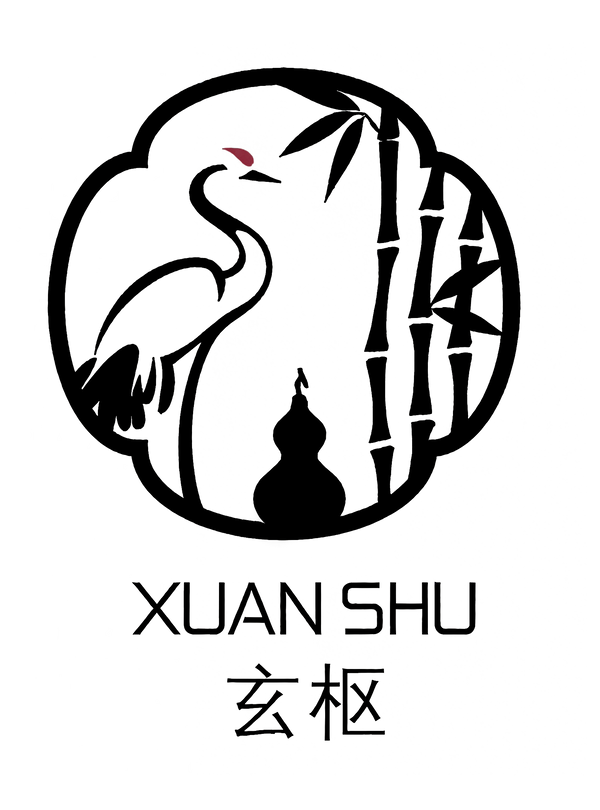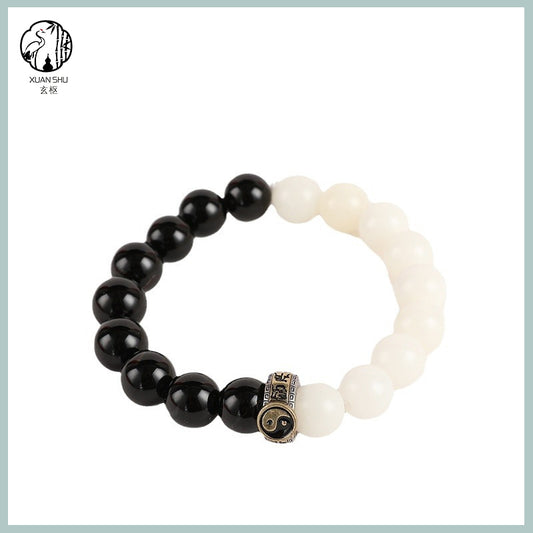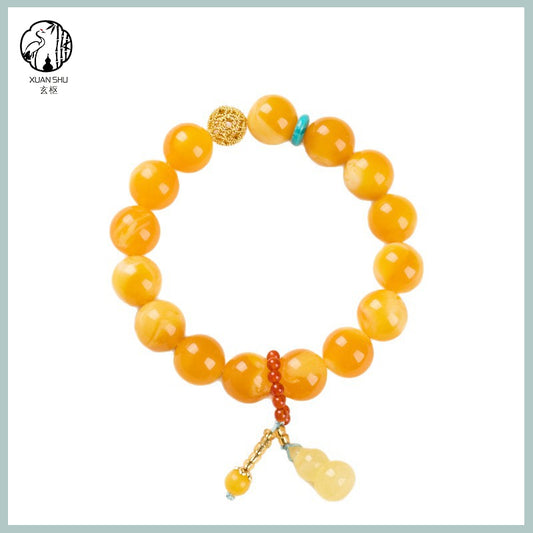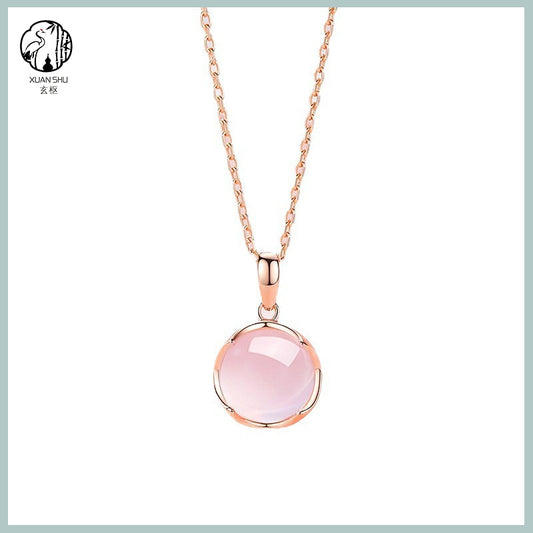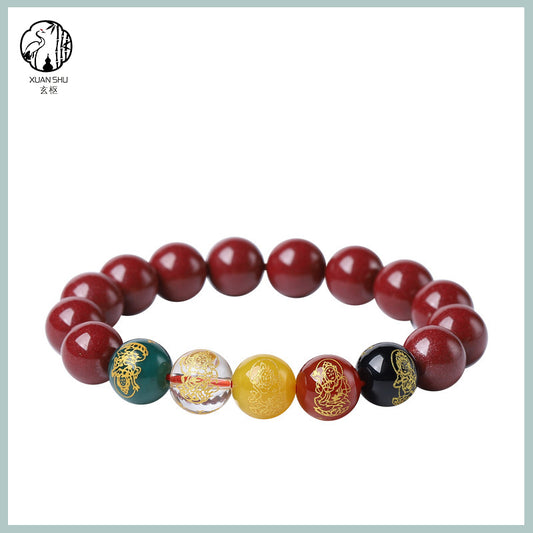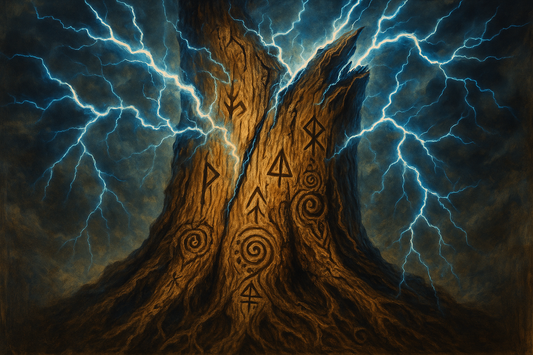What Does The Yin Yang Symbol Mean In Taoism?
The Yin-Yang symbol (Taiji Diagram) is one of the most iconic emblems of Taoism. Its black-and-white, interlocking form represents not only a religious symbol but also a profound expression of ancient Chinese philosophical thought. The concept of Yin and Yang runs through Taoist doctrines, traditional Chinese medicine, feng shui, martial arts, and many other fields, forming the core of dialectical thinking in Chinese culture. This article will delve into the profound meaning of this symbol by exploring its origins, philosophical significance, role in Taoist cultivation, and its broader cultural impact.
The Origin and Evolution of the Yin-Yang Symbol
Early Concepts of Yin and Yang
The concept of Yin and Yang did not originate from Taoism; its roots can be traced back to the pre-Qin period, particularly in the I Ching (Book of Changes). As stated in the Xici (Appended Statements) of the Zhou Yi: “The alternation of Yin and Yang is called the Dao,” suggesting that all transformations in the universe are driven by the interaction of these two opposing forces. Similarly, the Tao Te Ching notes: “All things carry Yin and embrace Yang; through their interaction, harmony is achieved,” emphasizing that balance between Yin and Yang is a fundamental law of cosmic operation.
The Formation of the Taiji Diagram
The modern form of the Yin-Yang symbol, often called the "Taiji Diagram" or the "Fish Diagram of Yin and Yang," can be traced back to the Song dynasty. It was popularized by the Taoist master Chen Tuan (known as "Fuyaozi") and later developed by Neo-Confucian scholars like Zhou Dunyi, becoming a respected cosmological model in both Taoist and Confucian traditions. The diagram features a circular shape with black and white halves embracing each other, each containing a dot of the opposite color. This vividly illustrates the ideas of mutual rooting and transformation between Yin and Yang.
Taoism’s Development of the Taiji Diagram
Taoism incorporated the Taiji Diagram into its cosmology and cultivation systems. It is seen as a symbol of the origin of the Dao: from Wu Ji (the limitless) arises Taiji (the supreme ultimate), from Taiji come the Two Modes (Yin and Yang), from the Two Modes arise the Four Symbols (Lesser Yang, Greater Yang, Lesser Yin, Greater Yin), and from the Four Symbols come the Eight Trigrams, which further evolve into all things in the universe. Thus, the Taiji Diagram serves not only as a philosophical symbol but also as a key reference in Taoist internal alchemy and spiritual practice.

The Philosophical Connotations of the Yin-Yang Symbol
Dialectical Thinking of Unity in Opposition
At the heart of the Yin-Yang symbol lies the philosophy of "unity in opposition." The black and white colors represent two opposing yet complementary forces, such as:
1. Heaven (Yang) and Earth (Yin)
2. Sun (Yang) and Moon (Yin)
3. Movement (Yang) and Stillness (Yin)
4. Strength (Yang) and Gentleness (Yin)
However, Yin and Yang are not in absolute opposition—they are interdependent. The interlocking structure of the symbol indicates that Yin cannot exist without Yang, and vice versa. This concept is remarkably similar to Hegel’s dialectical principle of the "unity of contradictions," yet it predates Western philosophy by over two thousand years.
Dynamic Balance and Cyclical Transformation
The S-shaped curve of the Taiji Diagram symbolizes the waxing and waning of Yin and Yang, akin to the alternation of seasons or the cycle of day and night. When Yin reaches its peak, Yang is born (as in the Winter Solstice); when Yang reaches its peak, Yin begins to rise (as in the Summer Solstice). This reflects the eternal motion and transformation inherent in all things.
Additionally, the "eyes" of the Yin-Yang fish (a white dot in the black half and a black dot in the white half) illustrate that within Yin there is Yang, and within Yang there is Yin. In Taoist internal alchemy, this is expressed as the dual cultivation of xing (spirit, Yang) and ming (body, Yin); in traditional Chinese medicine, it manifests as the principle of maintaining health through the balance of Yin and Yang.
A Cosmology of Harmonious Coexistence
Taoism holds that the origin of the universe is the Dao, and that the way the Dao operates is through the harmonious interplay of Yin and Yang. The circular shape of the Taiji Diagram symbolizes the completeness and cyclical nature of the cosmos, reflecting the idea that all things ultimately return to the holistic unity of the Dao.

The Significance of the Yin-Yang Symbol in Taoist Cultivation
Guidance in Internal Alchemy
Taoist internal alchemy emphasizes the transformation of essence (jing) into energy (qi), qi into spirit (shen), and shen into emptiness (xu). At its core, this practice is about harmonizing Yin and Yang. The Taiji Diagram is seen as a microcosm of the human body:
- Black (Yin) represents kidney water, essence, and the po (corporeal soul)
- White (Yang) represents heart fire, spirit, and the hun (ethereal soul)
Through techniques like breathing (tu-na), guided movement (dao-yin), and visualization (cun-xiang), practitioners circulate Yin and Yang energies within the body, mirroring the dynamics of the Taiji Diagram. The ultimate goal is to achieve pure Yang (spiritual transcendence) or harmonious Yin-Yang (longevity and vitality).
Use in Talismans and Ritual Magic
In Taoist talismanic practices (such as Bagua or Taiji talismans), the Yin-Yang symbol serves as a medium for expelling evil or invoking blessings. When drawing talismans, Taoist priests often combine cinnabar (Yang) and ink (Yin), symbolizing the activation of cosmic Yin-Yang forces.
Symbol of the Taoist Cosmology
Taoism regards the Taiji Diagram not only as a model for the creation of the universe but also as a visual tool for grasping the Dao. By meditating on the Taiji, practitioners can perceive the subtle transformations of Yin and Yang, thus aligning themselves with the ultimate unity of the Dao.

The Cultural Influence of the Yin-Yang Symbol
Foundation of Traditional Chinese Medicine
The Huangdi Neijing (Yellow Emperor’s Inner Canon) states: “Yin and Yang are the Dao of Heaven and Earth, the guiding principle of all things.” In traditional Chinese medicine, diagnostic and therapeutic principles, as well as the Five Elements (Wu Xing) theory, are based on the balance of Yin and Yang. For example:
- Excess Yang leads to heat (fever, inflammation)
- Excess Yin leads to cold (chills, blood and energy deficiency)
Treatment involves restoring balance—“cooling the hot, warming the cold”—to regulate Yin and Yang.
Core of Martial Arts and Qigong
Internal martial arts like Taijiquan (Tai Chi) and Baguazhang (Eight Trigram Palm) are fundamentally based on the dynamics of Yin and Yang. Concepts such as "combining hardness and softness" in Tai Chi and the "circular and fluid motion" in Baguazhang directly stem from the Taiji Diagram’s philosophy of dynamic equilibrium.
Applications in Feng Shui
Feng Shui (geomancy) emphasizes the accumulation of qi through balancing Yin and Yang in the environment. For example:
- A Yang residence (home for the living) should receive adequate sunlight (Yang), but not excessive exposure (extreme Yang).
- A Yin dwelling (tomb for the dead) should ideally be near both mountains and water—symbolizing the meeting of Yin and Yang.
Symbolic Meaning in Modern Culture
Today, the Yin-Yang symbol has transcended religious boundaries to become a global icon of Eastern wisdom, widely applied in areas such as:
- Business management: Balanced leadership that integrates toughness with empathy
- Psychology: Jung’s “shadow theory” resonates with the Yin-Yang concept
- Environmentalism: Emphasis on harmony between humanity and nature
Conclusion
As one of the most profound philosophical insights of Chinese civilization, the Yin-Yang symbol is not only a sacred emblem of Taoism but also a reflection of our ancestors' deep understanding of the laws that govern the universe. Every time I gaze upon the black-and-white embrace of the Taiji Diagram, I feel the eternal wisdom it holds.
Beginning with the dialectical concepts in the I Ching, our forebears established a unique way of perceiving the world. In my own spiritual practice, I have come to deeply realize that the philosophy of Yin and Yang permeates every aspect of Taoist cultivation. It has guided my journey in internal alchemy, revealing to me the true meaning of the dual cultivation of xing (spirit) and ming (vitality). Moreover, it influences all areas of our tradition—from Chinese medicine and martial arts to geomancy and feng shui.
In today’s challenging world, I feel the relevance of Yin-Yang philosophy more than ever. When faced with complex social dilemmas or natural crises, the wisdom of Yin-Yang balance often lights the path forward. It teaches us that true resolution lies in the union of strength and gentleness, motion and stillness. This pursuit of harmony—rooted in Eastern thought—may well be the remedy the modern world is searching for.
As a practitioner, I firmly believe that Yin-Yang philosophy is not merely a legacy of the past, but a timeless wisdom that points toward the future. It teaches us to seek unity in opposition and to find permanence within change—this, I believe, is the unique and enduring contribution of Eastern civilization to the world.
